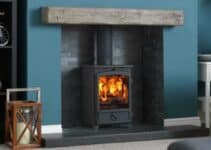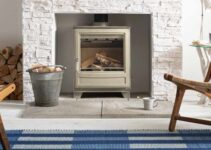A log burner can be a nice addition to a home, more for appearance than efficient heating. However, it’s understandable that some people want to investigate the viability of using a log burner as their primary heat source.
So, will a log burner heat the whole house? On their own, log burners won’t heat a whole house. This is because they’re typically sized for the room they’re in and won’t produce enough heat to circulate around a house. Also, they’re not fitted with any kind of air circulation mechanism.
In this article, we’ll explore some options for heating your whole house with a log burner, as it’s possible with the right setup.
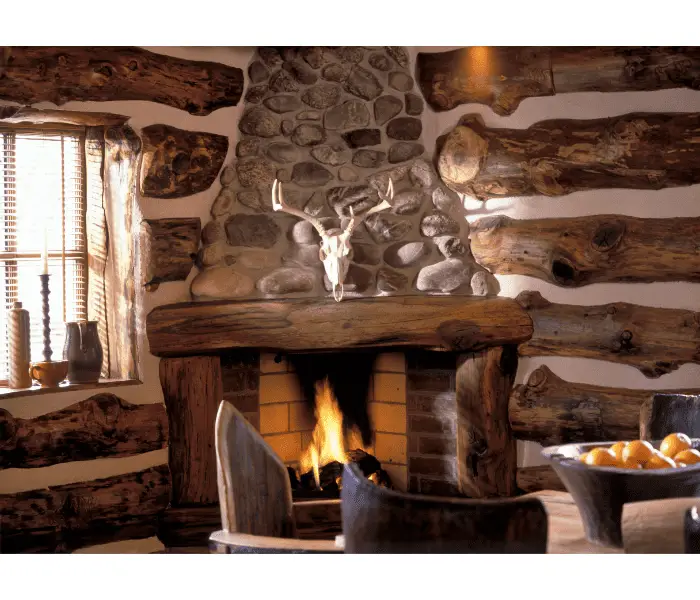
Understanding Heat Circulation from a Log Burner
To better understand how you can light a log burner as your primary heat source, it’s first worth looking at how they work. This might sound like an obvious place to start, but it’s useful information for what we discuss below.
Obviously, a log burner uses fire to produce heat. This radiates out of the stove, which is typically cast iron because it’s a very good conductor of heat.
After radiating out of the stove, the heat then travels around the room using convection currents. But let’s look at each step in more detail.
How Does a Log Burner Heat the Room?
The scientific process through which a log burner heats a room can be broken down into a few key stages.
Combustion: The process begins by placing logs inside the log burner and igniting them. The combustion of wood releases thermal energy in the form of heat and light, primarily through exothermic chemical reactions between the combustible components in the wood (cellulose and lignin) and the oxygen in the air.
Heat transfer: The heat generated during combustion is transferred to the log burner’s body, typically made of cast iron or steel. These materials are excellent conductors of heat, which allows for efficient heat transfer from the burning logs to the stove’s outer surface.
Convection: Once the log burner’s body has heated up, the surrounding air starts to warm up as well. The scientific principle at play here is convection, wherein the heated air rises due to its lower density compared to the cooler air.
As the warm air rises, it moves away from the stove and circulates throughout the room, while cooler air is drawn towards the stove to be heated. This continuous movement of air creates a convection current, which effectively distributes heat throughout the space.
Radiation: In addition to convection, the log burner also emits heat through radiation. As the stove’s body reaches high temperatures, it emits infrared radiation, which travels in straight lines and heats up objects and surfaces it encounters. This process further contributes to the warming of the room.
To calculate what size log burner you need in a room, you can use one of two methods. These are:
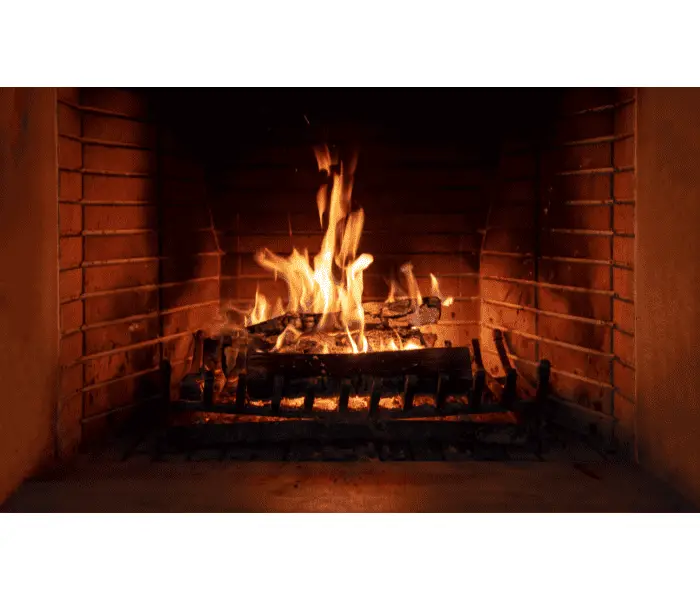
BTUs
BTU stands for British Thermal Unit, which refers to the amount of energy required to heat one pound of water by one degree Fahrenheit. Granted, we don’t typically use imperial measurements in the UK anymore, but that doesn’t really matter.
So how does this translate to heating a home?
In short, you need a set amount of BTUs for every cubic metre of space. However, there are other factors involved, such as surrounding rooms, insulation, and window area. As such, it’s generally easier to use a BTU calculator.
It’s always better to overestimate your BTU requirements with a log burner, as it’s much better than buying a burner that’s too weak.
KW Output
The other measurement is pretty easy to understand: it’s kilowatts of energy. A general rule of thumb is that you need 1kW of heat energy for every 15 cubic metres of space.
To work out the cubic metres of a room, multiply its length, width, and height together.
As with working out BTUs, you must then factor in insulation, surrounding rooms, and window space. Although calculating kW requirements is a bit simpler than BTUs, it’s worth just using a calculator. The one linked above gives both BTUs and kWs.
Choosing a Wood Burner
If you’ve already got a log burner fitted in your home, it’s most likely rated for the room it’s in. However, if you plan to heat your entire house with it, it won’t be powerful enough.
There’s not much you can do about this other than to buy a new log burner, and this might make the cost benefit redundant.
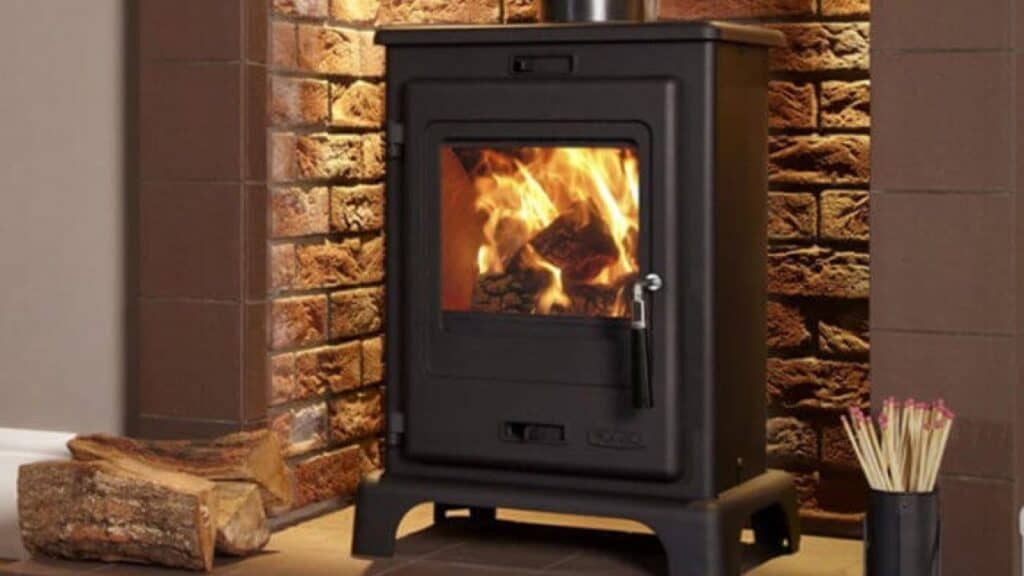
But if you’re looking to get a log burner installed to heat your home, you’re in a much better starting position. It’ll be best to speak to an expert though, as using it to heat a whole building will need a bit more work than calculating the BTU requirements and buying a massive log burner.
Is a Log Burner Cheaper than Central Heating?
Aside from deciding whether it’s possible to heat your entire home with a log burner, the next most important factor is cost. The calculations below are based on the assumption that you already own a log burner.
So, is a log burner cheaper than central heating?
The short answer is yes. Here’s why:
A rough price for a cubic metre of firewood is around £120. On average, an efficient log burner can use around 3.5 cubic metres of firewood between October and April if it’s only used in the evenings and on weekends. This works out as around £420 for heating.
Of course, there are some other factors we must consider. First, if your log burner is only designed to heat one room, it doesn’t mean you can turn your heating off completely.
With some careful air direction, you might be able to heat the entire ground floor of your home, though. In turn, this could cut up to 50% off your central heating bill.
Next, consider where you get your firewood. If you have the land owner’s permission, you can gather your own wood and season it at home.
This potentially means you get it for free, or at least considerably cheaper than buying it outright. Doing so will drastically cut your outgoings, making it objectively less expensive than central heating.
Finally, there’s your stove’s energy efficiency. A good log burner can be up to 90% efficient, meaning 90% of your fuel source is converted into heat.
Gas central heating is also about 90% efficient, but the fuel is typically more expensive.
The bottom line is that a log burner can be much cheaper to run than central heating, provided you manage it efficiently. Part of this involves understanding how to circulate air around your home so you can heat more rooms.
How Do I Circulate the Heat in My Wood Stove?
There are numerous tips for circulating and managing heat in a wood stove. Understanding these will help you get the most from the radiating heat coming from your log burner.
Setting up the Fire
First, build a fire that burns slowly to radiate heat more effectively. Build the fire on a small bed of ash and stack the logs properly so they burn in order.
Also, use seasoned wood with a moisture content of around 20%. Finally, use the vents to control air flow to reduce the speed at which wood burns.
All this adds up to a hotter, slower burning fire, which gives you more heat with less waste.
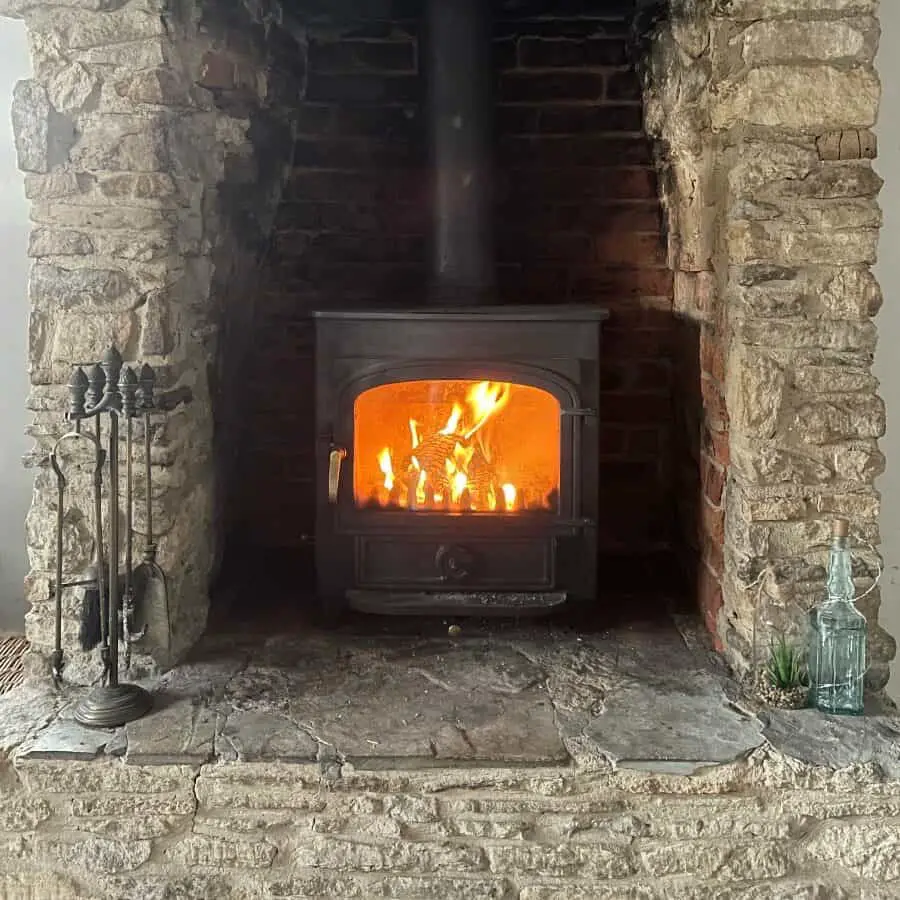
Heating Multiple Rooms with Wood Stove
There are various ways to direct heat around multiple rooms in your home. By this, we mean without installing anything that blows or directs air. Start with the following:
Doors
Open and shut doors where necessary to direct heat. This might seem obvious, but if you have rooms you don’t use that you think can tolerate not being heated, shut the doors. Equally, opening doors will allow heat to circulate into the room.
However, you must balance this against wasting heat or spreading it too much around your home. A lower BTU wood burner won’t be able to heat numerous rooms properly, so it’d make more sense to shut the doors and have one or two rooms heated instead.
Curtains
One of the main purposes of curtains is to insulate rooms. As such, you can use them to block off areas of your home that don’t need heating. For example, you could shut off a hallway or the stairwell to keep heat contained in a specific area.
The best curtains are thick and heavy ones, as these provide the best insulation. Velvet drapes work the best, particularly if they’re lined. You can usually pick these up second hand for very little money.
I like these thick insulating curtains, they retain heat a lot more than regular curtains:
An alternative option is to make your own by sewing several curtains together. It might not look pretty, but it doesn’t matter if it means you can heat your home more efficiently.
Understanding the Consequences of Not Heating Rooms
While you can shut off rooms to direct heat more efficiently, it’s worth understanding the consequences of not heating them.
This won’t matter as much in newer builds with good insulation, but it’s a bigger issue in older homes. It just so happens that these are more likely to have an active wood burner.
The biggest consequence of not heating a room is damp, particularly in old homes where the walls “breathe”. Damp can lead to a whole host of issues, so get your home checked before you decide to stop heating it.
How to Circulate Heat from Wood Stove
The simplest way to circulate heat from a wood stove is using convection, whether active or passive. Depending on your budget and commitment to the project, there are several ways you can go about this.
Fans
The simplest and cheapest option is to use fans to control and direct air flow. Working on the basic assumption that hot air rises, you simply need to set up fans in each room at the top and bottom.
Fans at the top of the room direct warm air away from the source (i.e., into the room), while fans at the bottom of the room direct cool air towards the source (i.e., out of the room).
Granted, fans aren’t super efficient, but they’ll get the job done. You must consider the impact they’ll have on your electricity bill and see if it’s cheaper than your central heating bill.
Also, fans will cool the warm air slightly, so bear that in mind.
Heat Exchanger
If your stove’s flue is plumbed in through upstairs rooms (which it likely is), you can install a heat exchanger. Simply put, this is a cylinder that contains a fan and hollow tubes.
As the warm air in the flue passes the exchanger, it heats the air inside the tubes. The fan blows this air out while drawing in cool air to continue the process.
It’s an efficient way of making use of the lost heat that escapes through the flue.
As you can probably guess, this is only helpful for heating an upstairs room through which the flue passes. However, considering it uses heat energy that would otherwise be lost, it’s a bit of a no-brainer.
HVAC Adaptation
Although HVAC (central heating and air conditioning) systems aren’t super common in British homes, they can be adapted to run off a wood stove. Essentially, they consist of a series of ducts that run within the walls and floors of your home to push warm or cool air into a room.
You could use a heat exchanger for this or any other method of connecting the stove to the ducting. While it wouldn’t be efficient to completely install a HVAC ducting system, it’s a good use of one that already exists.
Back Boiler/Water Boiler
The final (and most common) option for circulating heat from a stove around a home is a back boiler. It functions much like your gas-powered water heater, except it’s fitted on the back of a wood-burning stove.
Water is fed into the system using gravity, where it’s then heated and circulated around the home. The benefit of this is that you can use your existing radiator setup because it works just like any other central heating boiler.
However, there are a few considerations. First is the fact that you’ll only ever have a finite amount of hot water. It’s not as much of a problem for central heating, but it obviously matters for your taps.
As with immersion heaters, the maximum amount of hot water you’ll have at once is dependent on the size of the tank.
Second is the system’s efficiency. Most operate at around 70% efficiency, and the maximum you can get from it is 80%.
Compared to gas central heating, which is 90% efficient, it means you’ll objectively be losing money. So, although fuel might be cheaper, it doesn’t mean it’s a more cost-effective option.
Finally, there are the safety considerations. Back boilers have been phased out of homes because they’re not as safe as gas boilers.
It’s harder to control the pressure because the heat source isn’t constant. Without the right setup, you could risk it blowing up.
Will a 5kw Stove Heat My House?
A 5kW stove can contribute to your home’s heating, but it may not be enough to warm the entire house. The size of your home, insulation, room count, and regional climate all influence the effectiveness of a any size stove’s heating capacity.
Typically, a 5kW stove is effective for heating a single room or an open space up to around 70-100 square meters. In larger houses, if you have with inadequate insulation or harsh weather, a 5kW stove may not provide enough heat for the whole house.
To establish if a 5kW stove meets your heating needs, calculate your home’s heating requirements and evaluate any additional heating options that may be necessary to maintain a comfortable temperature.
Can a Wood Burner Heat a Whole House?
The bottom line is that it is possible to heat a home using a wood burning stove. But is it worth it? Probably not. The potential financial investment would take years to offset against the money you’ve saved.
However, a good compromise is to use your log burner to just heat a few rooms in your home. If it means you can turn off the central heating in those rooms, you’re bound to save money in a relatively short period.



